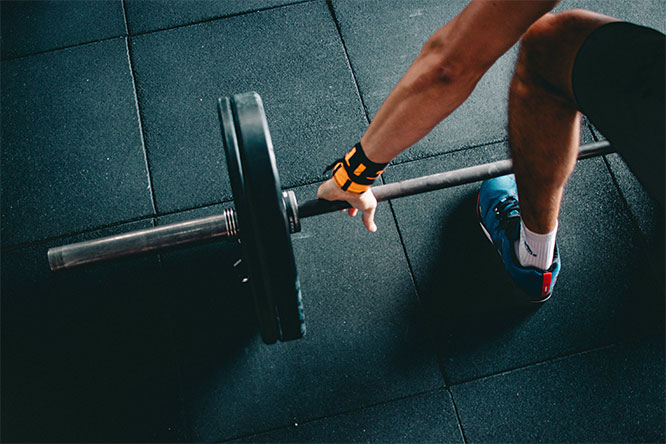Table of Contents

In the pursuit of physical prowess and sculpted bodies, understanding the concept of active and passive recovery is pivotal. This knowledge is not merely the key to preventing injuries and ensuring sustainability but also optimizing progression in bodybuilding.
Fitness software emerges as a vital tool in this context, providing comprehensive management of your active and passive recovery periods. Leveraging the power of technology, these applications can guide your rest periods, schedule workouts, track progress, and tailor recommendations, thereby ensuring you gain the maximum benefits from your bodybuilding regime.
TH7 Body Labs and other similar fitness software offer various features, such as advanced tracking of workouts, nutrition plans, hydration levels, and much more. These tools assist in managing both the active and passive recovery aspects of bodybuilding.
Understanding Active Recovery
Active recovery refers to low-intensity exercises performed after a high-intensity workout to help muscles recover faster. It is an essential aspect of any training program as it allows for proper repair of damaged muscle tissues, reduces the risk of injury, and promotes overall physical well-being.
Active recovery exercises can include walking, cycling, swimming, or any other form of low-impact movement that increases blood flow to the muscles without causing additional strain.
However, it is crucial to note that active recovery does not mean pushing yourself to exhaustion or performing high-intensity exercises. The goal is to engage in light, low-impact activities that help release built-up lactic acid and promote blood flow to the muscles.
Understanding Passive Recovery
Passive recovery, on the other hand, refers to rest periods between workouts. These periods allow for complete physical and mental recuperation from strenuous training sessions. Adequate sleep, hydration, and proper nutrition play a vital role in passive recovery.
Adequate sleep is crucial for muscle repair and strengthening as the body releases growth hormones during deep sleep. Staying hydrated helps flush out toxins from the body and keeps muscles functioning optimally. Proper nutrition, including adequate protein intake, is essential for muscle recovery and growth.
Finding the Balance
Both active and passive recovery are crucial for bodybuilding success. Balancing these two aspects is key to achieving optimal results. Overtraining can lead to burnout, injuries, and hinder progress, while inadequate rest and recovery can also impede growth and performance.
Fitness software offers personalized recommendations for rest periods, workout schedules, nutrition plans, and even hydration reminders to help individuals find the balance between active and passive recovery.
In conclusion, understanding the importance of both active and passive recovery is crucial for maximizing results in bodybuilding. By utilizing fitness software and following recommended guidelines, individuals can achieve their fitness goals while also promoting long-term sustainability and overall well-being.
So remember to give your body the rest it needs to reach its full potential! Assistance with managing both active and passive recovery periods is available with fitness software, which can guide rest periods, schedule workouts, track progress and tailor recommendations to ensure optimum bodybuilding results.
The Role of Fitness Software in Recovery Management
Fitness software plays an instrumental role in managing both active and passive recovery. Not only does it provide personalized recommendations for workout schedules and rest periods, but it also monitors key factors such as hydration levels and nutrition intake.
With features such as advanced tracking of workouts and recovery periods, these tools can significantly enhance the effectiveness of your bodybuilding regime. They offer a data-driven approach, allowing you to fine-tune your recovery strategies based on your personal progress and needs. It’s a vital aid in achieving your fitness goals while safeguarding your health and well-being.
Below are some specific ways in which fitness software can assist in managing active and passive recovery:
- Workout Tracking: By recording and analyzing your workouts, fitness software can help you track your progress and determine when to increase or decrease workout intensity.
- Rest Period Management: Fitness software can remind you to take proper rest periods between workouts, ensuring that you don’t overtrain or risk injury.
- Nutrition Planning: With personalized nutrition plans, fitness software can ensure that your body gets the necessary nutrients to support muscle repair and growth during passive recovery periods.
- Hydration Monitoring: Fitness software can track your water intake and send reminders to stay hydrated, ensuring your muscles are functioning optimally.
With these features and more, fitness software serves as a comprehensive tool for managing your recovery and optimizing your bodybuilding journey.
Conclusion
In today’s fast-paced world, where technology has become an integral part of our lives, incorporating fitness software into your bodybuilding regime can provide significant benefits.
By aiding in the management of both active and passive recovery periods, these tools can help individuals achieve their desired results while also promoting long-term sustainability and overall well-being.
So why not take advantage of this technology and give your body the support it needs to reach its full potential!




More Stories
Thoughts as of late: on evolving, growing & that tiny voice inside
County Health Officials Report 17% Increase in Tuberculosis Cases
10 Most Nutrient-Rich Foods To Include In Your Diet